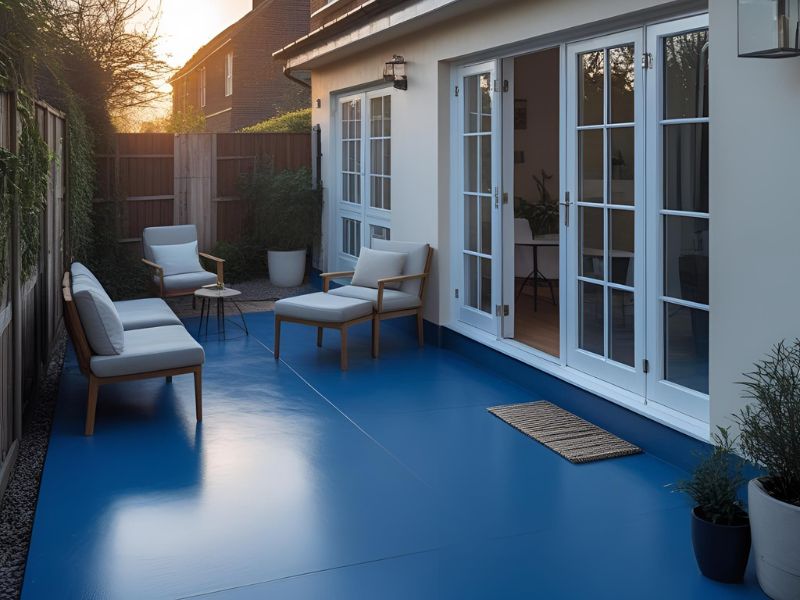
Bottom Line Up Front: Painting a patio in the UK typically costs between £350-£500 total when combining materials (£100-£200) and professional labour (£17-£26 per square metre). DIY approaches can reduce costs to just the material expense, while larger or complex patios may cost significantly more.
Transforming your outdoor space doesn't have to break the bank. We've helped hundreds of homeowners across the UK understand exactly what goes into patio painting costs, and we're sharing that insight with you today.

When most people think about refreshing their outdoor space, patio painting often comes to mind as an affordable option. Unlike complete patio replacement, painting offers a budget-friendly way to completely transform the look of your garden area.
The process involves several key steps that directly impact your final cost. First, surfaces need thorough cleaning and preparation. Next comes primer application for better paint adhesion. Finally, you'll apply one or two top coats depending on the paint quality and desired finish.
Patio paint differs significantly from regular wall paint. These specialised coatings need to withstand constant weather conditions, foot traffic, and temperature changes throughout the year. That durability comes at a premium, but it's essential for long-lasting results.
Paint represents the largest material expense for any patio project. Quality makes a massive difference in both appearance and longevity. Budget options might save money upfront but often require repainting sooner.
Resincoat outdoor patio paint stands out as a popular UK choice, costing approximately £52 (ex VAT) for a 5kg tin. This amount typically covers 35-50 square metres per coat, making it suitable for most residential patios with two coat applications.
Standard concrete paint runs cheaper at £25-40 per 5-litre tin, but these products may not offer the same weather resistance. For patio slabs and decorative surfaces, you might need specialised formulations that cost £60-80 per container.
Don't forget additional materials like brushes (£15-25 for quality options), rollers (£8-15), primer if required (£20-35), and protective equipment. These extras add £50-75 to your total material cost.
Professional painters charge differently depending on your location and project complexity. In England, expect to pay £17-26 per square metre for patio painting services. Scotland and Wales often see similar rates, while London and the South East command premium pricing.
Many contractors prefer daily rates for outdoor projects. The current market rate sits around £325 per day for skilled painters. Most residential patios require 1-2 days of work, depending on size and preparation needs.
Some factors affect labour pricing significantly. Complex surfaces with intricate patterns cost more than simple rectangular areas. Multiple levels, built-in planters, or decorative elements increase both time and difficulty, pushing costs higher.
Weather conditions can impact scheduling and pricing. Painters often charge premium rates for projects requiring specific timing or multiple visits due to rain delays.
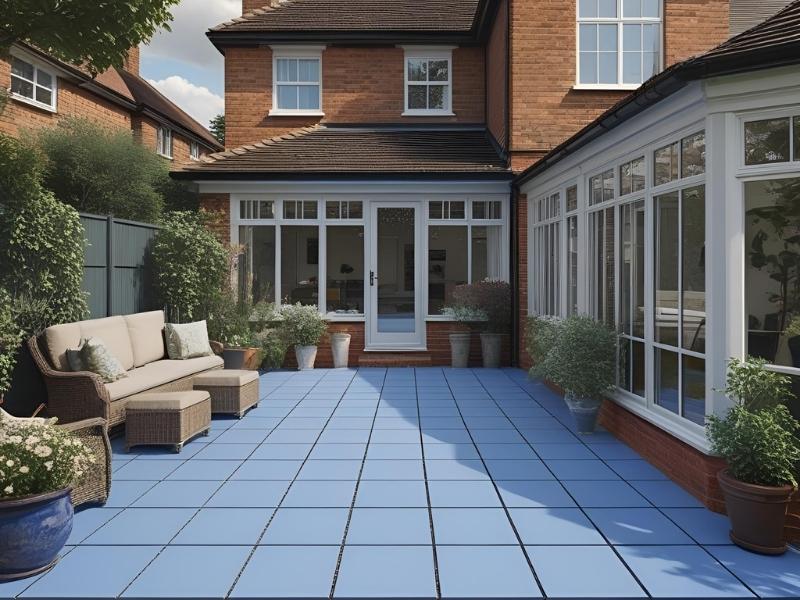
Patio size obviously affects your total investment. A typical 20 square metre patio costs £340-520 in labour alone, while larger 50 square metre areas might run £850-1,300. Material costs scale accordingly.
Surface condition plays a huge role in final pricing. New or well-maintained surfaces require minimal preparation. Older patios with stains, cracks, or previous paint layers need extensive prep work, adding 30-50% to your costs.
The type of material you're painting affects both product choice and application difficulty. Concrete surfaces are straightforward, though many people ask is it better to paint or stain outdoor concrete when choosing the right finish. Natural stone or textured slabs require specialised techniques and products.
Access to your patio influences costs too. Ground-level areas with easy access cost less than elevated or enclosed spaces requiring special equipment or careful navigation around garden features.
Proper preparation determines how long your paint job lasts. This step cannot be skipped, whether you're doing the work yourself or hiring professionals. Cutting corners here almost guarantees disappointing results within a year or two.
Cleaning represents the first crucial step. Most patios need jet washing to remove dirt, algae, and loose material. Professional jet washing costs £2-4 per square metre, or you can rent equipment for £40-60 per day.
Old paint removal adds complexity and cost. Chemical strippers work but require careful handling and disposal. Mechanical removal takes time but avoids chemical concerns. Either approach adds 1-2 days to your project timeline.
Crack filling and surface repairs often surprise homeowners with additional costs. Small cracks need filling compound (£8-15 per tube), while larger issues might require professional repair before painting can begin.
Taking the DIY route can save substantial money on labour costs. With materials costing £100-200 for most patios, you avoid the £300-500+ professional labour charges. However, DIY comes with trade-offs.
Professional work typically includes guarantees on both materials and labour. Most reputable companies offer 2-3 year warranties on their paint jobs. DIY projects obviously lack this protection, putting all risk on your shoulders.
Time investment differs dramatically between approaches. Professionals complete most patio painting in 1-2 days. DIY projects often stretch over several weekends, especially when accounting for weather delays and learning curves.
Quality differences show up immediately and over time. Experienced painters know proper techniques for even coverage, edge work, and weather protection. DIY results vary widely based on skill level and attention to detail.
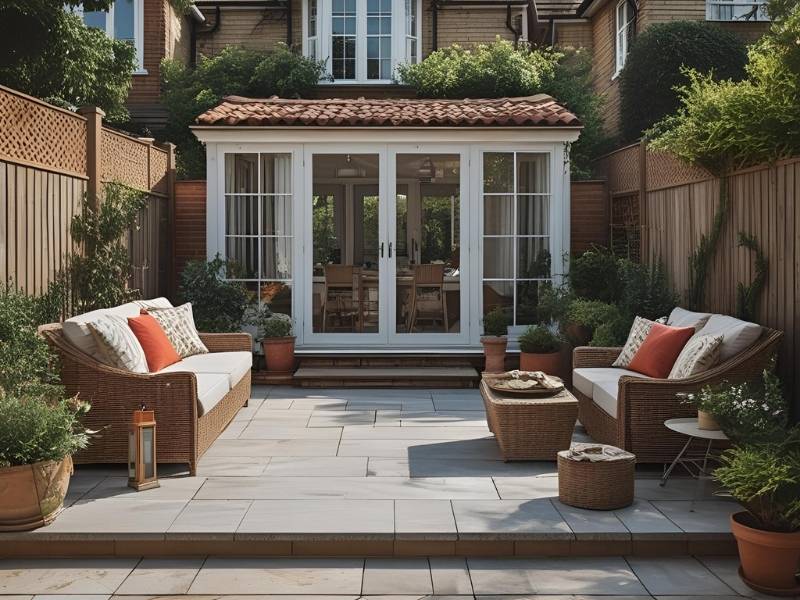
Several paint categories serve different patio needs and budgets. Understanding these options helps you make informed decisions about quality versus cost trade-offs.
Acrylic-based patio paints offer good value at £30-50 per 5-litre container. These water-based products clean up easily and work well on most surfaces. They're suitable for patios with moderate traffic and weather exposure.
Epoxy coatings provide superior durability but cost £60-90 per kit. These two-part systems require careful mixing and application but deliver exceptional weather resistance and longevity. They're ideal for high-traffic areas or harsh weather exposure.
Polyurethane-based products sit in the middle range at £45-70 per container. They offer better durability than basic acrylics while remaining easier to apply than epoxy systems. Many professionals prefer these for residential work.
Specialty anti-slip formulations cost 20-30% more than standard options but provide crucial safety benefits. If your patio gets wet frequently or serves elderly residents, this extra cost often justifies itself.
Location significantly impacts both material and labour costs across the UK. Understanding regional differences helps set realistic budget expectations for your project.
London and the South East typically see costs 15-25% above national averages. High living costs and strong demand drive premium pricing for both materials and labour in these areas.
Northern England, Scotland, and Wales often offer more competitive pricing. Labour rates might run £15-22 per square metre compared to £20-28 in expensive areas. Material costs stay relatively consistent due to national distribution.
Rural areas present mixed pricing scenarios. Lower labour costs offset by limited contractor availability and potentially higher material transport costs. Some remote areas see significant premiums due to travel time and logistics.
Urban areas with strong competition typically offer the best value for professional services. Multiple contractors competing for work helps keep prices reasonable while maintaining quality standards.
Weather plays the dominant role in patio painting timing. Paint needs dry conditions for proper curation, making spring and early summer ideal for most UK locations. Planning around weather saves money and ensures better results.
Seasonal demand affects pricing too. Spring sees peak demand as homeowners prepare for summer entertaining. Booking autumn or winter work often yields 10-15% discounts, though weather windows become more limited.
Professional schedules fill quickly during prime painting months. Booking 4-6 weeks ahead ensures availability during your preferred timeframe. Last-minute bookings often cost more due to scheduling premiums.
Consider your usage patterns when timing projects. Painting just before heavy entertainment seasons means you can't use the space during curing periods. Plan accordingly to avoid inconvenience.
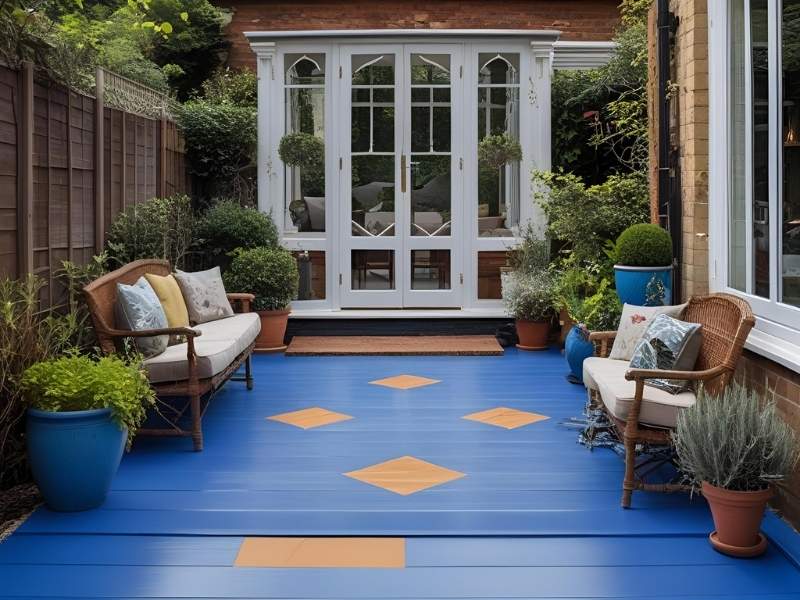
Quality paint jobs last 5-8 years with proper maintenance, making the initial investment worthwhile. Understanding maintenance requirements helps protect your investment and plan future costs.
Annual cleaning extends paint life significantly. Gentle washing removes dirt and organic growth before they damage the coating. This simple step often doubles the time between repainting needs.
Touch-up work addresses minor damage before it spreads. Keeping spare paint for quick repairs saves money compared to full repainting. Most professionals recommend touch-ups every 2-3 years as needed.
High-traffic areas wear faster than decorative sections. Planning maintenance around usage patterns helps prioritise where to focus attention and budget for partial repainting as needed.
Skipping surface preparation creates the most expensive mistakes. Poor prep work leads to premature failure, requiring complete redoing within 1-2 years. This false economy often doubles your total investment.
Wrong paint selection for your specific conditions wastes money and time. Using interior paint outdoors, or choosing inappropriate formulations for your patio material, guarantees poor results requiring correction.
Weather-related mistakes cost time and money. Painting in poor conditions or ignoring forecast changes can ruin entire jobs. Professional timing knowledge prevents these expensive errors.
Inadequate coverage thinking saves money actually increases costs. Thin application to stretch materials results in poor protection and early failure. Proper coverage rates ensure value for your investment.
Multiple quotes help establish fair market pricing for your specific project. Aim for 3-4 estimates from reputable contractors to understand the normal range for your area and requirements.
Detailed specifications ensure comparable quotes. Provide identical information about surface condition, desired finish, timing, and access requirements to each contractor for meaningful comparisons.
Written estimates protect both parties and provide clarity about what's included. Verbal quotes often lead to misunderstandings and disputes about scope or pricing adjustments.
References and examples demonstrate contractor capability and reliability. Ask to see recent patio work and speak with previous customers about their experience with quality and service.

Professional contractors carry public liability insurance protecting you from accident-related costs. Verify coverage before hiring anyone to work on your property. DIY work obviously provides no such protection.
Product warranties vary significantly between manufacturers and application methods. Professional installation often extends warranty coverage compared to DIY application of the same products.
Workmanship guarantees separate good contractors from questionable ones. Reputable painters stand behind their work with 2-3 year guarantees on proper application and performance.
Documentation protects your investment and warranty claims. Keep all receipts, specifications, and contractor information for future reference if issues arise.
Modern patio paints must meet strict environmental standards, but application still requires precautions. Proper ventilation, protective equipment, and disposal methods protect both people and environment.
VOC content affects both environmental impact and drying characteristics. Low-VOC formulations cost slightly more but provide better air quality during and after application. They're especially important for enclosed patio areas.
Disposal of old paint and cleaning materials requires proper handling. Many councils provide hazardous waste collection services for paint-related materials. Factor disposal costs into your project budget.
Safety equipment represents essential costs for DIY projects. Proper protective gear costs £30-50 but prevents health risks from paint exposure. Don't compromise on safety to save a few pounds.
Technology continues improving paint formulations, offering better performance and easier application. New products often command premium pricing initially but provide superior value through longevity and reduced maintenance.
Environmental concerns drive development of more sustainable options. Eco-friendly formulations typically cost 10-20% more but appeal to environmentally conscious homeowners and may become standard over time.
Application techniques evolve with new tools and methods. Spray application becomes more popular for large areas, though it requires more skill and equipment than traditional brush and roller methods.
Colour trends influence product development and pricing. Popular colours often see competitive pricing, while specialty or custom colours command premiums. Consider trend longevity when choosing colours for best value.
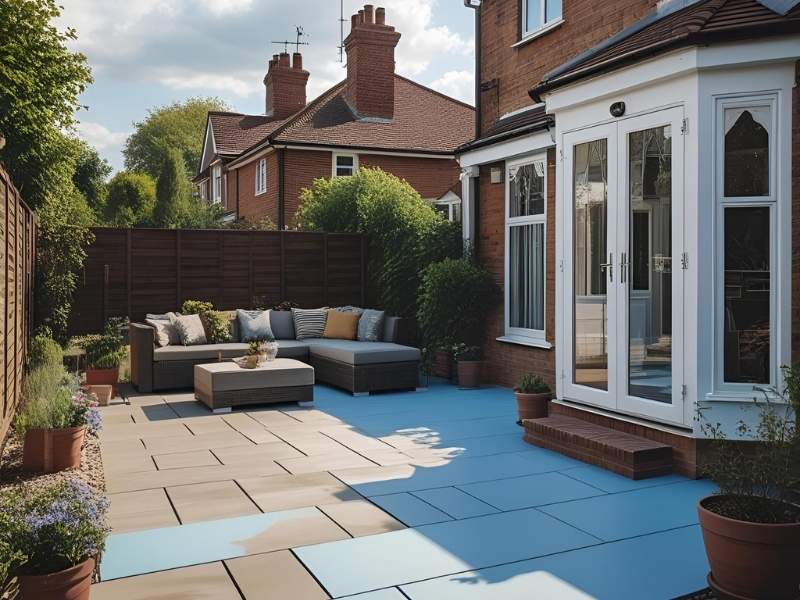
Ready to transform your outdoor space with professional patio painting? Driveway Painting brings years of experience and proven results to every project. We understand the unique challenges of UK weather and provide durable, beautiful finishes that last.
Our team provides detailed, written quotes covering all aspects of your project. We explain material options, timing considerations, and maintenance requirements so you can make informed decisions about your investment.
Contact Driveway Painting today for your free, no-obligation quote. We serve homeowners across the UK with professional patio painting services that deliver exceptional value and lasting results. Don't let another season pass with a tired-looking patio when transformation is just a phone call away.